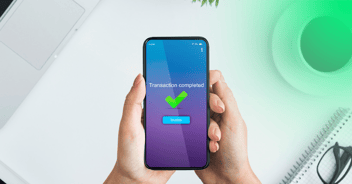Cross-border payments used to pose a real nightmare for banks and their clients, with a frustrating mix of slow payments and lack of payment visibility. At launch, SWIFT gpi promised to address these concerns, but how has the solution fared since its launch, and what developments emerged in the last two years?
SWIFT gpi: A recap
Short for ‘global payments initiative’, gpi was launched by SWIFT at the beginning of 2017. With gpi, SWIFT intended to solve many of the frustrations around slow cross-border payments, including a lack of payment tracing abilities and anomalies.
The result is that payments are now faster, easier to track and more transparent in nature. Institutions and their clients know when a payment will be carried out, understand the fees, and can more easily identify payments throughout the process of completing a transaction.
Has SWIFT gpi proved popular?
It’s easy to see why SWIFT would give gpi significant support, and SWIFT’s push to get FIs and their clients on board with gpi seems to have paid off as a result. At SIBOS 2019, SWIFT reported that almost 60% of all international transfers sent on SWIFT are now executed using SWIFT gpi.
These transfers are made at incredible speed, too. SWIFT claims that 40% of payments made using gpi reach the recipient within five minutes, with a further 50% of payments within 30 minutes.
With SWIFT gpi proving effective, and given that there are few options that compete with SWIFT at the scale that correspondent banking requires, all indications are that SWIFT gpi has been hugely successful. Indeed, by 2018 the success of SWIFT gpi had become so widespread that SWIFT planned on universal adoption of gpi by the end of 2020.
Payment tracking
Throughout the roll-out and adoption of gpi, SWIFT has continued to add new features. For example, the ability to track international payments is a gpi feature that has proved to be particularly attractive to the 10,000 SWIFT member institutions. SWIFT has continued to roll out improvements to gpi since 2017, and payment tracking has been one of the key improvements.
In 2018 SWIFT enhanced gpi by adding a UETR (Unique End-to-end Transaction Reference) to all transactions sent by SWIFT members, even where members are not yet signed up to gpi. Through 2019 SWIFT also ensured that the required tracking abilities were available to all member banks.
SWIFT gpi for corporates
Banks are the primary users of SWIFT and its gpi service, but corporates can also benefit from deeper insight into the payments executed on their behalf. That’s why, in July 2019, SWIFT launched a gpi initiative for corporates.
SWIFT suggests that gpi for corporates is focused on large enterprises that make use of multiple banks, and that the gpi for corporates service will help these companies to improve the way payments are initiated and tracked across the banks in use. That’s all thanks to a single, central view that covers all banking partners.
EastNets and SWIFT gpi
Despite broad adoption of SWIFT gpi, many FIs are yet to roll out SWIFT gpi as part of their core payments operations. But, just as with any major shift in technology, switching to SWIFT gpi brings with it some unique challenges.
Thankfully, Eastnets’ solution for SWIFT gpi implementation supports the full SWIFT gpi rulebook, and is designed with rapid implementation in mind. This is thanks to standardized configuration, alongside easy integration with typical back-office applications. In essence, Eastnets’ gpi solution lowers cost of ownership and reduces the time it takes to roll out SWIFT gpi services.
If you’re considering partnering with Eastnets, rest assured that you’ll be able to take full advantage of SWIFT gpi benefits including:
- Rich transaction information
Eastnets provides access to enriched gpi transaction information that is detailed and comprehensive, alongside configurable notifications for pending gpi payments.
- Single interface
With Eastnets, FIs can enjoy access to gpi information from any banking channel, displayed in a single streamlined interface for easy access, and with automatic generation and reconciliation of gpi status updates.
- Choice of retention period
While SWIFT gpi retains messages for 124 days, clients using Eastnets’ gpi implementation can define their own retention periods – with no limitations or constraints.
The Eastnets SWIFT gpi solution is continuously updated throughout ongoing changes to gpi. Full details of the Eastnets implementation for gpi is available here.
The future for SWIFT gpi
SWIFT remains highly trusted, so it’s likely that FIs will have few better and sufficiently scalable alternatives to using SWIFT gpi for correspondent banking and beyond.
What’s more, SWIFT is planning ongoing improvements to gpi, including the ability to pre-validate payment instructions to correct errors before confirmation. SWIFT gpi is also pushing into new markets, including a push into real-time payment in Asia Pacific.
With FIs faced with little choice other than to use the SWIFT network, it’s worth ensuring that the best SWIFT gpi implementation is in place. Eastnets’ SWIFT gpi implementation is suited to a broad range of use cases, and we encourage FIs to get in touch with us to see how the Eastnets SWIFT gpi implementation can service their cross-border payment requirements.
You can find out lots more about that here.





